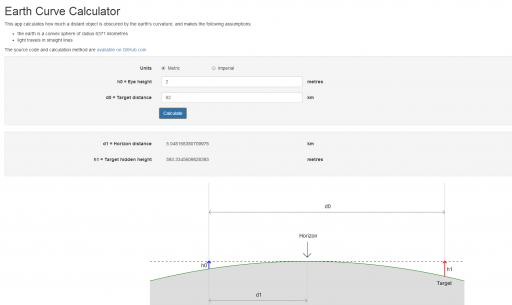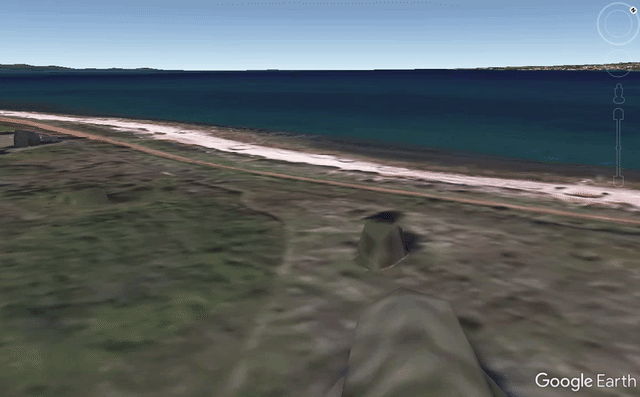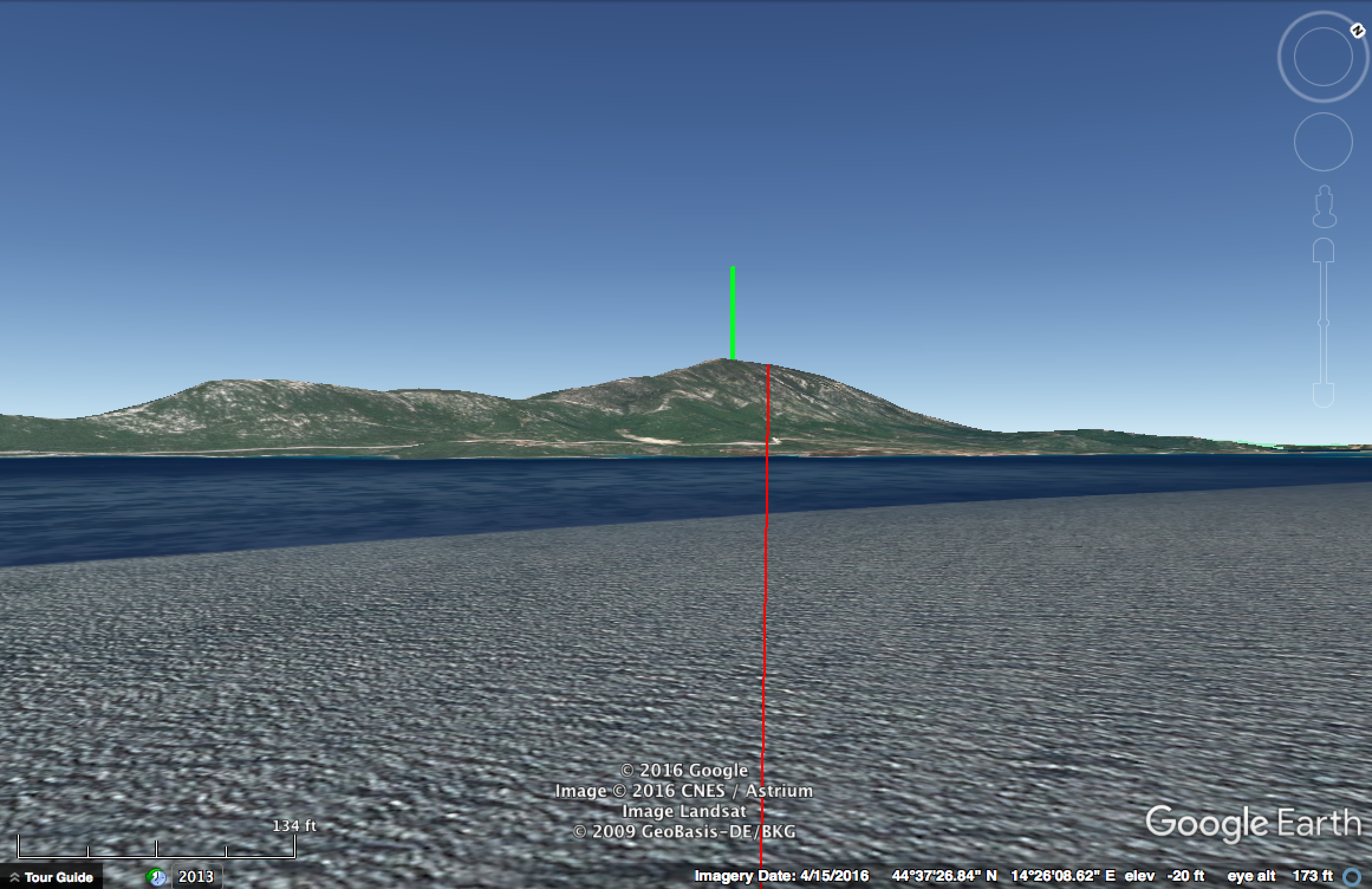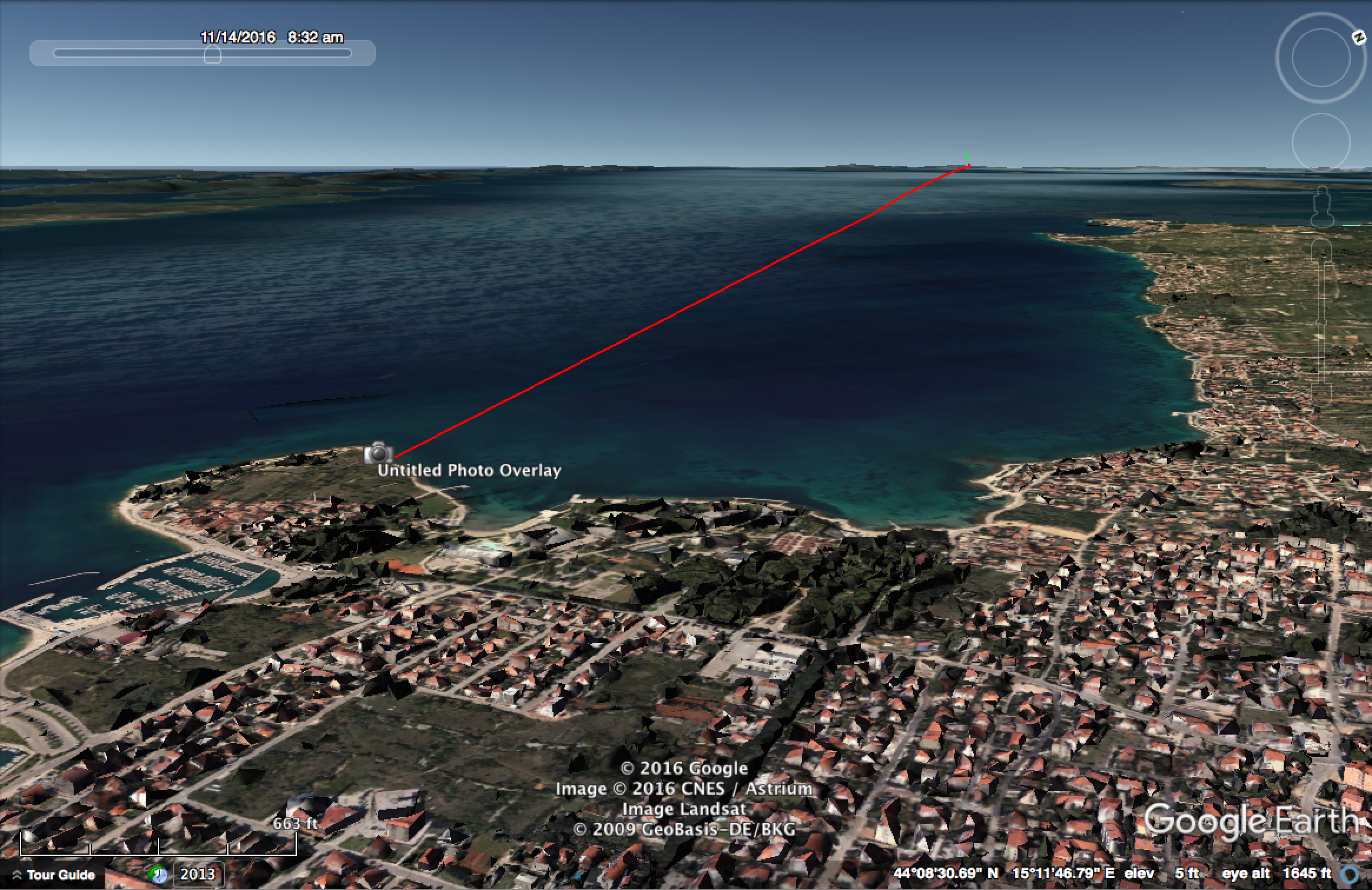The following discussion has a error in that it was assumed the field of view was the same at long distances as it was at 8m. In fact the field of view narrows with longer focus. This alters the scale factor from 0.02 to 0.01737 for a P900 at full zoom and focussed on something over 100 meters away. Discussed at: https://www.metabunk.org/posts/205386/
Hence the sizes calculated below should be reduced by 15%. This does not significantly alter any of the conclusions
Hence the sizes calculated below should be reduced by 15%. This does not significantly alter any of the conclusions
There have been some discussions on using photographs to calculate the distance to something if the height is known. The math is relatively simple once you've got the correct figures for your camera. Here I'm going to look at a specific case with the P900 camera (popular among Flat Earthers and Chemtrail enthusiasts) and show how to get the relevant numbers and then use them.
Here I'm assuming we;d be using full zoom of 2000mm, and no digital zoom. Different zoom settings will be discussed.
Essentially what we want to find the the field of view, i.e. the angle between the left side of the image and the right side. The more we zoom in, the narrower the field of view becomes.
A more straightforward way of expressing the field of views is as a ratio between the width and the distance. In the above image I've set a rule at 8m (8000mm) from the camera, and we can see the width of the image covers about 160mm, so the FOV ratio is 160/8000 or 0.02 (within the bounds of measurement error)
This means that the width covered by the photo at a distance D is D*0.02. We can easily verify this for the image above. It's a 8m, so 8*0.02 = 0.16m = 160mm
Since FOV is just an angle, the FOV ratio remains the same regardless of distance. So if the image is 160mm wide at 8m then it will be 1600mm (1.6m) wide at 80m, and 1.6km wide at 80km.
So to find the length of anything in a 2000mm focal length P900 image at distance D, then we just need to scale it relative to the image width, so it's the D*0.02*(Object Length)/(Image Width)
So, a practical example, here's a P900 photo of an island. (Posted in the comment of an accompanying video that shows the approximate viewpoint)
The photo is taken from Zadar in Croatia. The Island is Losinji, The mountain is Televrina, the high point of which is 589m above sea level and 91.8 km from the view point.
What we are interested in here is how much of the mountain is visible above the horizon. Now in this shrunk version of the image, the width is 1440 pixels, D (distance) is 91800m, so for an object of length L pixels in this image, the actual size 91.8km away is 91800*0.02*L/1440
The visible height is 90 pixels:
So 91800*0.02*90/1440 = 114.75, or about 115m.
So of the 589m of the mountain that would be visible from a higher viewpoint (or on a theoretical flat Earth) only 115m is visible, so 474m of the mountain is hidden by the horizon. That's about 80% hidden
We can verify this is a sensible figure in two ways, firstly with a horizon calculator. We also need to know the height of the camera, I'm assuming they are standing on the top of the steps (2m) with camera at eye level, so around 3.5m
https://www.metabunk.org/curve/?d=91.8&h=3.5&r=6371&u=m&a=n&fd=60&fp=3264
A pure geometry calculation gives a hidden value of 568m, but when we account for standard refraction in the atmosphere, then the hidden value is 481m, close to the measured 474m
Distance = 91.8 km (91800 m), View Height = 3.5 meters Radius = 6371 km (6371000 m)
Horizon = 6.68 km (6678.1 m)
Bulge = 165.35 meters
Drop = 661.41 meters
Hidden= 568.62 meters
With Standard Refraction 7/6*r, radius = 7432.83 km (7432833.33 m)
Refracted Horizon = 7.21 km (7213.17 m)
Refracted Drop= 566.91 meters
Refracted Hidden= 481.29 meters
Then we can also compare what we see against a view of the island for the same distance, but a few hundred meters in the air (so we can see the full height), then over the photo, and mark the horizon in the photo vs the actual horizon.
Now this is somewhat rough due to the 3D nature, but the result is 157/224, or 70% hidden, the camera calculation showed 80% hidden, but well within the correct ballpark, and all certanly enough to demonstrate the curvature of the ocean surface.
Addendum. The above is a little hard to follow, so here's maybe an easier way of looking at it.
Here's an example of something of known height and distance. The Cooling tower of The Rancho Seco Nuclear Generating Station, viewed from Holly's Hill Vineyard.
601 pixels high, image width is 4608
52 km away
so 52000 * 0.02 * 601 / 4608 = 136m, 446 feet
Internet says the towers are 426 feet high. Looks like I slightly over-measured, but certainly in the right ballpark.
Last edited:











